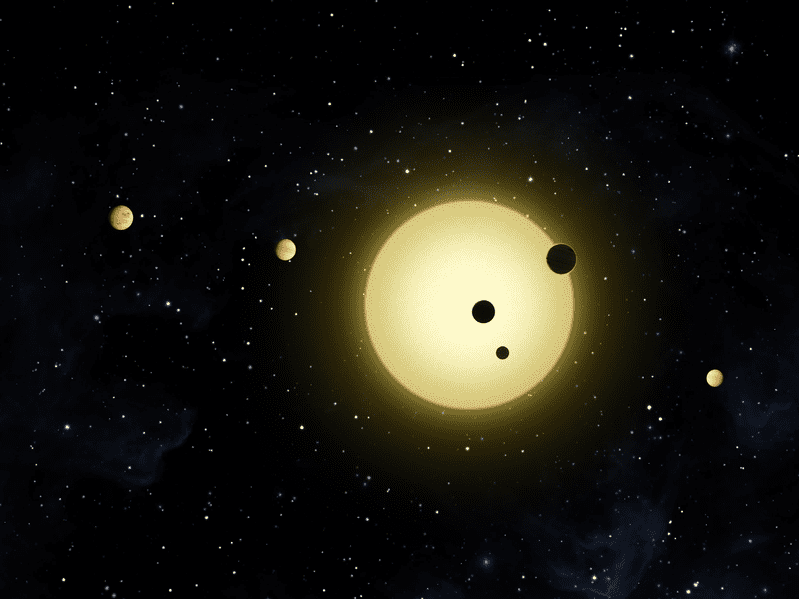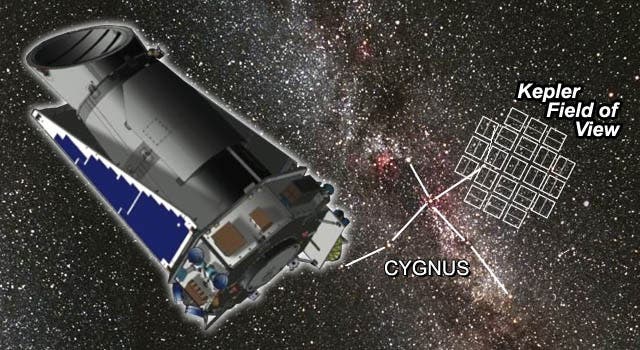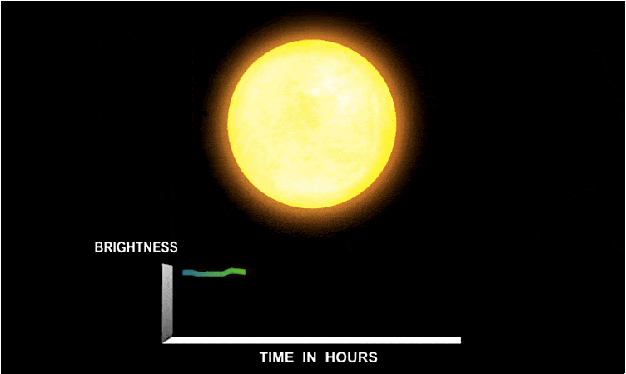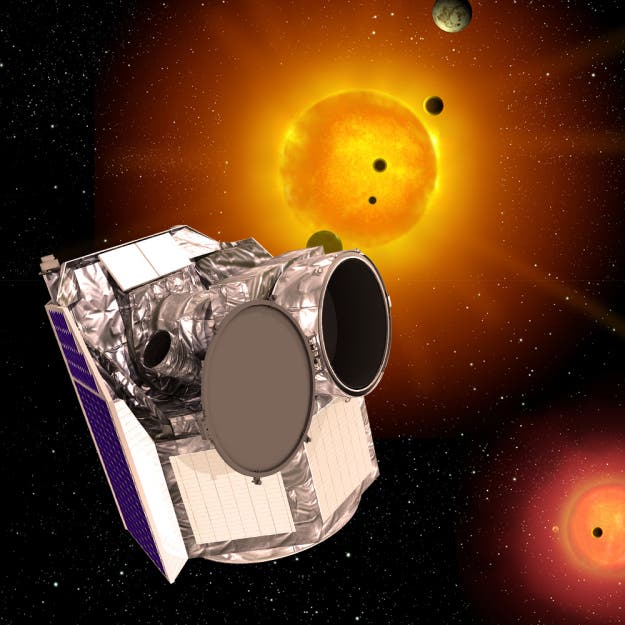
In 2018, NASA’s Kepler Space Telescope mission came to a predictable end after it ran out of fuel some 94 million miles from Earth. During its nine-year planet-hunting mission, Kepler discovered nearly 3,000 exoplanet candidates and more than 2,600 confirmed exoplanets in our galaxy, cementing the notion that our solar system isn’t all that special. So far, 55 exoplanets that are potentially habitable — meaning they orbit their stars at just the right distance that may allow water to flow on the surface — have been found, of which 20 are Terran or Earth-sized.
There are at least as many planets as there are stars in the galaxy
After studying thousands of exoplanets astronomers are now confident that:
- Relatively small planets are common;
- There are likely more planets than stars in the galaxy;
- Planetary systems are flat like the solar system;
- Planets and planetary systems are extremely diverse;
- No exoplanets similar to Earth in size, distance, and type of star they orbit have been found.

“I think that exoplanets tell us about our place in the universe. That’s probably the main reason the discovery of the first exoplanets were awarded the Nobel Prize in Physics this year. We are seeing just how diverse planets are. Planets are more common than they were thought to be before the first exoplanets were found. The number of planets in our galaxy is at least as large as the number of stars. But while planets and planetary systems are so diverse, planets like Earth may be very, very rare,” Dr. Jack Lissauer, a scientist at the NASA Ames Research Center and co-investigator of the Kepler mission, told ZME Science at the World Science Forum in Budapest. The World Science Forum is a biannual international conference on global science policy, which is affiliated with UNESCO and ICSU.
An exoplanet is any planet orbiting a star other than the Sun. Just 24 years ago, we only knew of planets in our solar system — but not for lack of trying. Detecting exoplanets is very challenging because they’re much smaller and fainter than stars. Since exoplanets are not self-luminous, scientists had to think outside the box.
The most successful exoplanet detection method is transit photometry, which looks for periodic, repetitive dips in the visible light of stars caused by planets passing, or transiting, in front of them. Essentially, a transit is just a partial eclipse.

“It was getting all the precision to detect the small variations in the light of the stars for planetary transits. To be able to detect planets — actually the smallest one that we’ve found was about the size of Earth’s moon, it’s the smallest planet known,” Lissauer said.
This has led to some incredibly unexpected discoveries that exceeded even our wildest expectations. Planets such as Kepler-22b, which is a water world between the size of Earth and Neptune located more than 600 light-years away or Kepler-16b, which is part of a ‘Tatooine-like’ system 200 light-years away — it is home to the largest planet ever discovered orbiting two stars. Then there’s the exciting Kepler-11 system, home to no fewer than six planets and the fullest, most compact planetary system yet discovered beyond our own.

“A year before that, or even eight months before that, no multi-planetary transiting system had been discovered. By the time of Kepler-11 discovery, there were two others. One had three planets, one had two planets, Kepler-11 had six. And we were able to derive the masses of the inner five by the perturbations they gave on one another so the transits were not periodic. It contains five of the lowest mass exoplanets at the time for which we had measurements of both their size and their mass, so we could have good estimates of what they’re made of, by getting their density,” Lissauer told ZME Science.
The car-sized telescope was launched primarily to detect small planets. For this purpose, it was designed to find out how many planets are out there not by observing the entire galaxy but by taking a sample in and near the habitable zone — the region at the right distance from the star so that the surface has liquid water.
Beyond Kepler
Although it has been decommissioned, Kepler’s legacy lives on. Scientists are still sifting through thousands of candidate exoplanets, a task which will keep them busy for many years to come. Kepler has also shaped future missions such as the Transiting Exoplanet Survey Satellite, or TESS.
Launched in April 2018, TESS is NASA’s latest planet hunter. Its mission is to survey planets orbiting 200,000 of some of the brightest stars close to Earth. Later, planets identified by TESS can be inspected for a closer look by the upcoming James Webb Telescope.
“I’m a co-investigator on TESS as well as Kepler and I think of Kepler as having done great science by detecting these very small planets — planets not hugely different from Earth in their properties, in some cases,” Lissauer said.
“TESS won’t detect planets as small and as long-period orbits as Kepler — it has much smaller cameras — but it detects planets around brighter stars. So, the purpose of TESS is really finding planets around very bright stars so there’s enough light from these stars that we can detect light passing through their thin atmosphere where they transit their stars. So, TESS is enabling us — with other instruments, especially the James Webb Telescope, which will be launched in two years, and some of the very large and extremely large telescopes on the ground — to study the composition of the atmospheres of mid-sized exoplanets. Not Earth analogs — that’s too difficult — but not these hot Jupiters. So, planets a big step closer to our own,” he added, explaining TESS’ major role in future planet-hunting efforts.
Besides TESS, there are exciting exoplanet-hunting missions. Europe’s CHaracterising ExOPlanets Satellite (CHEOPS) mission is destined to launch in December. Its mission is to that of a follow-up: it will be tasked with studying stars known to harbor planets, rather than surveying the sky in search of new ones.
By performing observations of multiple planetary transits, CHEOPS will be able to provide more precise measurements of a planet’s size, which can be combined with existing mass determinations to render accurate densities. Knowing these parameters, it is possible to determine the exoplanet’s composition and discriminate between Earth-like planets where life may blossom and other types of Earth-mass planets that challenge our current notions of habitability.

In 2026, ESA will launch PLATO, which is short for the PLAnetary Transits and Oscillations of stars) mission. PLATO is designed to find and determine the properties of Earth-like planets that orbit the habitable zone around stars similar to the Sun. For the first time, PLATO will allow scientists to calculate accurately the properties of a large number of stars with planets, including their ages.
Meanwhile, ESA’s ARIEL (Atmospheric Remote-sensing Infrared Exoplanet Large-survey) mission is destined to study and characterize exoplanets, rather than discover them. ARIEL is scheduled to launch in 2028. The mission is designed to perform high-accuracy transit, eclipse, and phase-curve multiband observations of exoplanets. Scientists are confident that ARIEL will be able to provide a complex picture of the chemical nature of its targeted exoplanets, but also their host stars. This will allow researchers to investigate the nature of these exoplanets, how they formed, and how they evolved.
Kepler opened the gate for mankind’s exploration of the cosmos, and its successors are bound to offer even more surprises. There are billions — perhaps trillions — of stars in the Milky Way galaxy alone and, on average, each of those stars has at least one planet orbiting them. However, there really is no place like home.
“We only have Earth. It’s possible that there are other planets like Earth out there but even if they are very similar, they are very far away. We can’t do a migration. We can’t solve our problem as the Irish did in the late 1800s to solve the potato famine. We would be like Easter Island. If we don’t take care of this planet, we are toast! All the mass extinctions in the last 5 million years are coincident with the rise of CO2 in the atmosphere of our planet. We must stop this crazy behavior. We can’t just say something has to be done. We have to do things ourselves. We have to cut our carbon footprint,” Lissauer told the audience during an event at the 2019 World Science Forum, held between 20-24 November.


